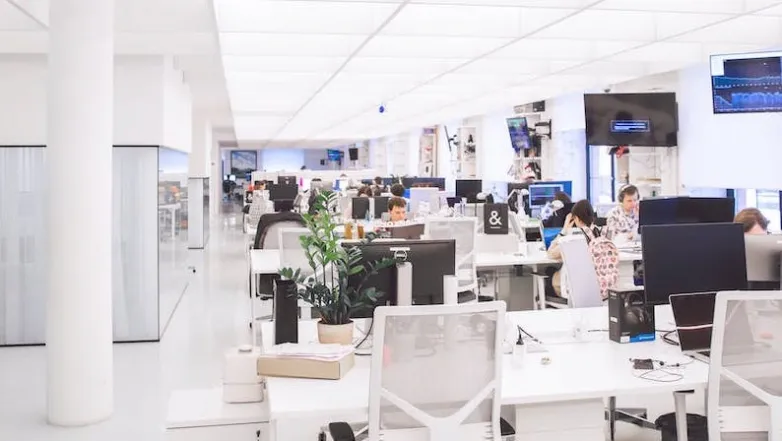Common Commercial HVAC Problems and Effective Maintenance Solutions: A Primer to Improve Energy Efficiency

Heating, Ventilation, and Air Conditioning (HVAC) systems play an integral role in maintaining indoor comfort and air quality. However, these systems often face common challenges that can compromise their efficiency and drive up energy costs. Implementing effective maintenance strategies can address these issues and lead to uncommon energy savings. Firstly, sourcing a hub for all HVAC & mechanical needs is an elementary undertaking; secondly, this article provides an essential primer to understand common problems to identify the optimal solutions for effective maintenance.
Filter Neglect and Indoor Air Quality
One of the most common issues affecting HVAC systems is the neglect of air filters: over time, filters accumulate dust, dirt and debris, obstructing airflow and reducing system efficiency. Additionally, clogged filters can lead to poor indoor air quality as pollutants are circulated throughout the building. Regularly replacing or cleaning air filters is a simple yet effective maintenance practice to enhance system performance and contribute to a healthier indoor environment.
Refrigerant Leaks
Refrigerant leaks are a prevalent challenge in HVAC systems, significantly impacting energy efficiency. When refrigerant levels drop, the system has to work harder to achieve the desired temperature, resulting in increased energy consumption. Identifying and fixing refrigerant leaks promptly is crucial to maintaining optimal performance - regular inspections by trained technicians can detect leaks early on, preventing excessive energy usage and minimizing the environmental impact of refrigerant emissions.
Inefficient Thermostat Settings
Inefficient thermostat settings contribute to both comfort issues and unnecessary energy consumption; settings that are too high or too low can lead to overworking the HVAC system, increasing wear and tear and energy usage. Implementing a programmable thermostat and establishing optimal temperature ranges based on occupancy and seasonality can help regulate indoor climate efficiently, reducing energy consumption and promoting long-term system health.
Ductwork Issues
Leaky or improperly insulated ductwork is another common challenge that compromises HVAC efficiency. Ducts play a critical role in distributing conditioned air throughout a building - when leaks are present, air can escape before reaching its intended destination, leading to uneven temperatures and increased energy consumption. Regular inspections, sealing of duct leaks and proper insulation can optimize the performance of the entire HVAC system, ensuring conditioned air reaches its destination efficiently.
Wear and Tear on Components
HVAC systems consist of various mechanical and electrical components that can experience wear and tear over time. Regular maintenance, including lubrication, belt adjustments and inspection of electrical connections can prevent breakdowns and extend the lifespan of these components. By addressing wear and tear proactively, building operators can circumvent costly repairs and replacements while maintaining optimal energy efficiency.
Dirty Coils
Condenser and evaporator coils are critical components in HVAC systems that facilitate heat exchange. When these coils accumulate dirt and debris their ability to transfer heat is compromised, resulting in reduced system efficiency. Regular coil cleaning as part of routine maintenance can prevent energy waste and guarantee the HVAC system operates at peak performance. Additionally, clean coils contribute to improved indoor air quality by preventing the growth of mold and bacteria.
Oversized or Undersized Systems
Inaccurate sizing of HVAC systems is a common issue that can lead to inefficiency - oversized systems tend to cycle on and off frequently, consuming more energy than necessary; meanwhile, undersized systems struggle to meet the desired temperature, leading to increased energy consumption. Properly sizing HVAC systems based on the building's heating and cooling needs, considering factors such as insulation and occupancy, is crucial for achieving energy savings and optimal performance.
Conclusion
Effective maintenance strategies are paramount in addressing common HVAC challenges and achieving uncommon energy savings. By investing in proactive maintenance, building operators can enhance the longevity of their HVAC systems while reducing energy consumption and promoting a healthier indoor environment. When implemented systematically, these strategies can turn routine maintenance into a powerful tool for achieving uncommon energy savings in HVAC systems.
Also read
- Revolution Beneath the Streets: Smarter Solutions for Underground Infrastructure Rehabilitation
- The Future of Natural Gas Generators in Business
- How Next-Gen Materials Are Reshaping the Future of Solar Energy
- When and Why Solar Projects Need Historical Weather Analysis
- Europe’s Solar Surge: Trends Driving Photovoltaic Installations Forward
